Public Archive
A patchy record of DIY satellite imagery and weather notes since 2020. The open-weather public archive is open to everyone willing and able to contribute.
Words for Climate
An evolving set of words chosen by contributors to reflect their experiences of the climate crisis.
Filter by
Ground Station Type
Automatic Ground Stations are local, semi-permanent stations that record and upload satellite transmissions automatically once per day. Manual ground stations are DIY and often mobile; operators manually record and upload satellite transmissions.
Satellites
The archive contains Automatic Picture Transmissions (APT) by US weather satellites NOAA-15, NOAA-18 and NOAA-19.
Nowcasts
Collective earth-sensing events led by open-weather, co-produced by a network of contributors around the world.
Contributors
A list of tagged contributors only. Please contact us if you want to be added.
Automatic Ground Stations
Search
2587 archive entries
2025-04-02 22:51:00
Zack Wettstein
Seattle, United States
United States
NOAA-18

2025-04-02 22:15:00
Goownown Growers
The Seaweed Institute
CAST, Helston, Cornwall, United Kingdom
United Kingdom
NOAA-19
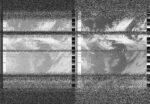
2025-04-02 22:15:00
Hospitalfield
Arbroath, Scotland
Scotland
NOAA-19
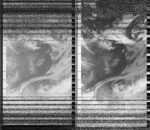
2025-04-02 11:15:00
Zack Wettstein
Seattle, United States
United States
NOAA-19

2025-04-02 19:34:00
Vienna Automatic
Vienna, Austria
Austria
NOAA-15

2025-04-02 09:15:00
Zack Wettstein
Seattle, United States
United States
NOAA-15

2025-04-02 10:52:00
Heidi Neilson
Gilboa, New York, United States
United States
NOAA-19
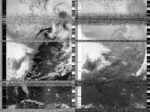
2025-04-02 08:57:00
Filip Shatlan and Diana Engelmann
Gainesville, Florida , United States
United States
NOAA-15
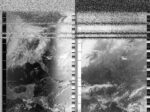
2025-04-02 12:30:00
Hospitalfield
Arbroath, Scotland
Scotland
NOAA-18
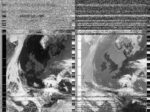

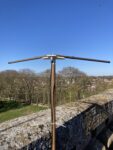
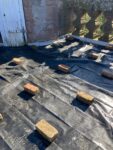
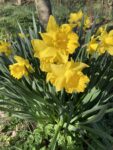
At 12.30 the ground station recorded this pass. At 13.00 I was on the other side of town and heard a sonic boom. Squinted up in the sun to see two low flying jets at high speed, heading out to sea, leaving white trails on a bright blue sky. We aren't far from a military base, after all. Around 15.00 I head to the tower for some checks: increase buffer mins to 2, ensure ventilation around the AGS, check antenna's position. On the roof this time the puddles have dried up and the sky is clear. Some of the old bricks holding the tarp in place have Arbroath imprinted on them, and I wonder when and where in the town they were made. Just a small cold breeze to remind that it's spring, not summer. Daffodils almost seem luminescent in the strong light. Around 16.00 I'm down at the beach, the tide is high, almost all the way up to the sea wall. There's a dead seal that's lost its head and a solid pink plastic bottle left on the stair pillar like an extra ornate twirl. It looks recently left and goes in the bin, the seal looks like it's been there a while.
2025-04-01 11:27:51
Sasha Engelmann
Nicosia, Cyprus
Cyprus
NOAA-18

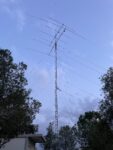


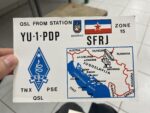
We drive up the road to the English School Radio Club at dust, the sky a soft purple-blue, and a tower with several Yagi antennas comes into view. At ground level are two bungalows, one with the historical 'home' of the English School Radio Club, and a new renovated bungalow used today, as the older structure is failing. Nestor (President of the Cyprus Amateur Radio Society) and Demetris (President of the Nicosia Chapter of the Cyprus Amateur Radio Society) tell me of the history of the club, the days when one had to call the fire department to be lifted on a raised platform to fix the antenna. They have a cabinet full of hundreds and hundreds of QSL cards, written postcards that confirmed amateur radio contacts between operators around the world. "There are some here from countries that no longer exist!" they tell me, and I immediately find myself spreading out hundreds of QSL cards from the former Yugoslavia on a peeling green table. Next door, we power up the transceivers and I make three QSOs (radio amateur contacts) with hams in Slovenia, Hungary and Barcelona. I speak the longest to the amateur in Barcelona, who tells me my contact is 'excellent' and makes good wishes to me and my family. While we listen and tune the radio, I hear many other stories of amateur radio on Cyprus, of speaking to amateurs in Syria, Egypt, Turkey and Iran, and of the politics of amateur radio and current educational programmes aimed to be inclusive to women and girls. The radio is so clear and engrossing - voice rising clearly on SSB through the 'whoosh' of the spectrum - that we are late for our dinner reservation.
2025-04-01 23:05:00
Zack Wettstein
Seattle, United States
United States
NOAA-18

2025-04-01 22:38:00
Heidi Neilson
Gilboa, New York, United States
United States
NOAA-18
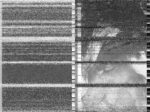
2025-04-01 22:28:00
Filip Shatlan and Diana Engelmann
Gainesville, Florida , United States
United States
NOAA-19
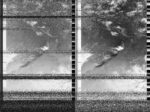
2025-04-01 19:25:00
Zack Wettstein
Seattle, United States
United States
NOAA-15

2025-04-01 22:28:00
Goownown Growers
The Seaweed Institute
CAST, Helston, Cornwall, United Kingdom
United Kingdom
NOAA-19

2025-04-01 21:47:00
Vienna Automatic
Vienna, Austria
Austria
NOAA-19

2025-04-01 11:05:00
Heidi Neilson
Gilboa, New York, United States
United States
NOAA-19

2025-04-01 09:16:00
Goownown Growers
The Seaweed Institute
CAST, Helston, Cornwall, United Kingdom
United Kingdom
NOAA-15

2025-04-01 09:13:00
Hospitalfield
Arbroath, Scotland
Scotland
NOAA-15
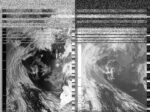
2025-03-31 23:17:00
Zack Wettstein
Seattle, United States
United States
NOAA-18

2025-03-31 22:40:00
Filip Shatlan and Diana Engelmann
Gainesville, Florida , United States
United States
NOAA-19
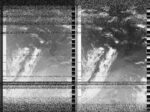
2025-03-31 19:27:00
Hospitalfield
Arbroath, Scotland
Scotland
NOAA-15
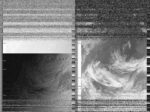
2025-03-31 11:18:00
Heidi Neilson
Gilboa, New York, United States
United States
NOAA-19

2025-03-31 12:58:00
Goownown Growers
The Seaweed Institute
CAST, Helston, Cornwall, United Kingdom
United Kingdom
NOAA-18

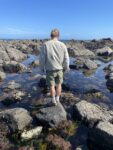
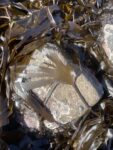
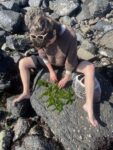
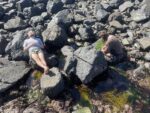
It’s forecast to be an astrological 0m tide in Falmouth – one of the lowest of the year. These extreme tides always sit relatively close to the equinox and, with the high pressure, the tides will creep even lower than expected.
We clear the day and head to one of our favourite spots on The Lizard peninsular.
This spot is very familiar to us, a tidal pool that offers calm water even when the sea is choppy and rough. The breeze today disrupts the sea and a swell is hitting this part of the coast – we find the pool to be the sanctuary we always hope it to be.
Spring brings beautiful rock pooling – no seaweed has become large enough to swamp out other species, most are in their main growing season, so there is lots of beautiful fresh fronds. The sun-bleaching we see later in the year, as the temperature and UV increase, hasn’t yet happened. The water is still cool, not warm enough to support many fouling organisms. The results are clear diverse healthy-looking rock pools.
Kelp semi-drys splayed over rocks, waiting to be freed by the incoming tide. Ruth, inspired, partially dries her Sea Lettuce harvest on a bolder.
This sky is so blue, with just the wispiest clouds high above – a blue that makes any other weather seem implausible. On this little spot of coast its hard to belief there will be any visible weather systems on the image we receive today,- but there is lots, you can see The Lizard though, sitting under a pool of clear sky.
We were here on the equivalent low tide in 2024, the 12 March. It was so cold we had to bring flasks of tea, hats, gloves and thermals so we could last a few hours out here. Today we bath in the sun, agreeing, with relief, that we’ve made it through winter. Sometimes on days like this we do surveys and try to document what we see – today we just enjoy the space. We wonder how we can incorporate more days like this back into our lives.
The Seaweed Institute
2025-03-31 12:19:00
Vienna Automatic
Vienna, Austria
Austria
NOAA-18

2025-03-31 11:41:09
Sasha Engelmann
Nicosia, Cyprus
Cyprus
NOAA-18

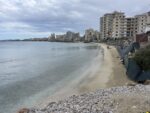
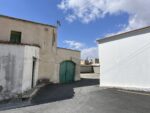
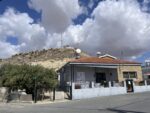
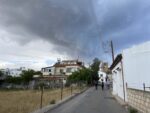
Teaching undergraduate UK geography students in Nicosia, Cyprus is an experience of a clash between worlds- the worlds of Greek and Turkish Cypriots living across checkpoints and buffer zones, and those of students eager to extract 'data' on life in a divided city. Standing on the beach of the suburb of Varosha, yesterday, our guide Georgia pointed to her apartment building, framed by two once-regal hotels, to which she she has not been able to return, like all residents of Varosha, since the Turkish army arrived in 1974. She was due to be married on the day she had to leave her town. She points out fields that once boasted dense orange groves, and speaks about the tradition of making sculptures from oranges in the shapes of dolphins and other animals. She shows us the shop that had the "best cheese sandwich of the 70s- a delicacy", and the boutique where women would buy fur coats. An abandoned kiosk marks the place where Varosha first served soft ice cream. There is an eeriness both to being in such places on a research trip, and to seeing the ruins being photographed by the numerous passerby and members of the public. Many pose in front of dilapidated photo shops and ruined movie theatres. We speak about ruins, aesthetics, dark tourism and what the gesture of taking a selfie in Varosha means. It is unseasonably warm in Cyprus, as most residents tell us- at least ten degrees above the average temperature of springtime. Saharan dust arrived in Nicosia over the weekend.
2025-03-30 23:30:00
Zack Wettstein
Seattle, United States
United States
NOAA-18


Our inaugural recording for our AGS came at the tail end of a string of storms, including thunderstorms and hail, which are rare for Seattle let alone in March.
2025-03-30 23:05:00
Heidi Neilson
Gilboa, New York, United States
United States
NOAA-18

2025-03-30 23:02:00
Hospitalfield
Arbroath, Scotland
Scotland
NOAA-18
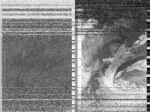
2025-03-30 19:53:00
Goownown Growers
The Seaweed Institute
CAST, Helston, Cornwall, United Kingdom
United Kingdom
NOAA-15

2025-03-30 11:33:00
Filip Shatlan and Diana Engelmann
Gainesville, Florida , United States
United States
NOAA-19
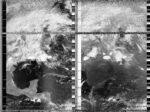
2025-03-30 12:31:00
Vienna Automatic
Vienna, Austria
Austria
NOAA-18

2025-03-29 23:17:00
Heidi Neilson
Gilboa, New York, United States
United States
NOAA-18

2025-03-29 20:16:00
Filip Shatlan and Diana Engelmann
Gainesville, Florida , United States
United States
NOAA-15
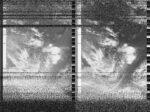
2025-03-29 22:14:00
Goownown Growers
The Seaweed Institute
CAST, Helston, Cornwall, United Kingdom
United Kingdom
NOAA-18

2025-03-29 18:39:00
Vienna Automatic
Vienna, Austria
Austria
NOAA-15

2025-03-28 23:27:00
Filip Shatlan and Diana Engelmann
Gainesville, Florida , United States
United States
NOAA-18
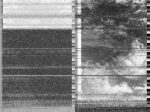
2025-03-28 20:38:00
Hospitalfield
Arbroath, Scotland
Scotland
NOAA-19
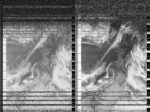
2025-03-28 12:04:00
Heidi Neilson
Gilboa, New York, United States
United States
NOAA-18

2025-03-28 10:48:00
Goownown Growers
The Seaweed Institute
CAST, Helston, Cornwall, United Kingdom
United Kingdom
NOAA-19

2025-03-28 10:46:00
Hospitalfield
Arbroath, Scotland
Scotland
NOAA-19

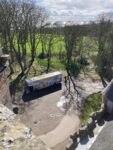
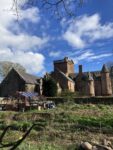
Today I visited the antenna on top of the tower after it was installed yesterday (thanks to Ross and Kirsten!). There's a bright enough sun to squint but not enough to warm the body, just flush my face. Or that could be the walk up spiralling stairway and the sudden exposure to wind. The AGS is further down the stairs, in the collections store room, just next to the Victorian telescope that I'm told is rumoured to have be used out here on the tower. Now, the gleaming copper v-dipole antenna is standing firm – just a slight wibble in its arms in the gusting wind. Strapped to the eroding sandstone. A lightning rod is a nearby companion, a much older installation. Strong shadows and pools of water sit on the roof from last night's rain. Fast moving clouds make a repeating rhythm of sensations, like drum beats. One beat sun, one beat rain flecks, beat cloud, beat sun, beat rain etc. The wind buffeting is a constant through the day. The sea is silvery in the distance with a slightly hazy horizon. Looking down to ground level, daffodils smile back. Dots of primrose. Bluebells are on the cusp. Perhaps less distinct waves of their flowering than in the past. The beats quicken. Up here it's just me, but down from the tower it's a busy day, the garden club volunteers have lots of spring jobs to do, the Travelling Gallery bus is visiting, the cafe is packed, and there's more going on than I know about. I shout to Andy (who drives the bus) – he can't hear me over the wind, but I take a photo.
2025-03-28 10:08:00
Vienna Automatic
Vienna, Austria
Austria
NOAA-19

2025-03-28 08:19:00
Hospitalfield
Arbroath, Scotland
Scotland
NOAA-15

2025-03-27 23:40:00
Filip Shatlan and Diana Engelmann
Gainesville, Florida , United States
United States
NOAA-18
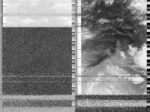
2025-03-27 19:32:00
Heidi Neilson
Gilboa, New York, United States
United States
NOAA-15

2025-03-27 20:53:00
Hospitalfield
Arbroath, Scotland
Scotland
NOAA-19

2025-03-27 18:31:00
Goownown Growers
The Seaweed Institute
CAST, Helston, Cornwall, United Kingdom
United Kingdom
NOAA-15

2025-03-27 12:24:38
KLIDEN FLORES LIMA
LIMA, PERU
PERU
NOAA-15


Satellite: NOAA 15
Pass Start: 27 Mar 2025 12:24:38 GMT
Pass Duration: 14:55
Elevation: 54
Azimuth: 281
Solar Elevation: 14.8
Direction: southbound
Creation Time: 27 March 2025 12:26:28 GMT
Satellite Type: NOAA
Channel A: 2 (near infrared)
Channel B: 4 (thermal infrared)
Enhancement: HVCT
Ground Station: LIMA, PERU/South America.
My experience was pleasant because in my exact location there are no weather problems, but in other latitudes of my country there are weather crises of various types.
2025-03-27 10:59:00
Hospitalfield
Arbroath, Scotland
Scotland
NOAA-19

First daytime image from the antenna at Hospitalfield. Weather: Increasingly drizzly and windy from the start of the day. Hoods up. Rain that sounds like it might be hail. Dry ground means big puddles.
2025-03-26 21:05:00
Hospitalfield
Arbroath, Scotland
Scotland
NOAA-19

2025-03-26 18:59:00
Hospitalfield
Arbroath, Scotland
Scotland
NOAA-15

2025-03-26 18:57:00
Goownown Growers
The Seaweed Institute
CAST, Helston, Cornwall, United Kingdom
United Kingdom
NOAA-15

2025-03-26 23:09:00
Cosmos Astronomy Club
Pune, India
India
NOAA-18

2025-03-26 18:17:00
Vienna Automatic
Vienna, Austria
Austria
NOAA-15

2025-03-26 12:33:00
Filip Shatlan and Diana Engelmann
Gainesville, Florida , United States
United States
NOAA-18
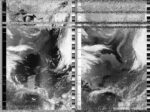
2025-03-26 08:38:00
Heidi Neilson
Gilboa, New York, United States
United States
NOAA-15

2025-03-25 22:19:00
Heidi Neilson
Gilboa, New York, United States
United States
NOAA-19

2025-03-25 20:20:00
Filip Shatlan and Diana Engelmann
Gainesville, Florida , United States
United States
NOAA-15
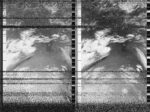
2025-03-25 21:16:00
Goownown Growers
The Seaweed Institute
CAST, Helston, Cornwall, United Kingdom
United Kingdom
NOAA-19

2025-03-25 20:35:00
Vienna Automatic
Vienna, Austria
Austria
NOAA-19

2025-03-25 10:53:00
Heidi Neilson
Gilboa, New York, United States
United States
NOAA-19

2025-03-25 10:18:00
Cosmos Astronomy Club
Pune, India
India
NOAA-19

2025-03-24 20:48:00
Vienna Automatic
Vienna, Austria
Austria
NOAA-19

2025-03-24 21:45:00
Cosmos Astronomy Club
Pune, India
India
NOAA-19

2025-03-24 11:08:00
Filip Shatlan and Diana Engelmann
Gainesville, Florida , United States
United States
NOAA-19
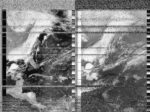
2025-03-24 11:06:00
Heidi Neilson
Gilboa, New York, United States
United States
NOAA-19

2025-03-24 11:48:00
Goownown Growers
The Seaweed Institute
CAST, Helston, Cornwall, United Kingdom
United Kingdom
NOAA-18

2025-03-23 22:40:00
Filip Shatlan and Diana Engelmann
Gainesville, Florida , United States
United States
NOAA-19
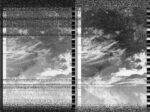
2025-03-23 19:36:00
Heidi Neilson
Gilboa, New York, United States
United States
NOAA-15

2025-03-23 21:00:00
Vienna Automatic
Vienna, Austria
Austria
NOAA-19

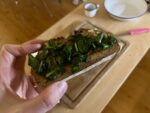
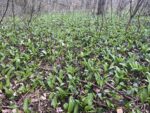
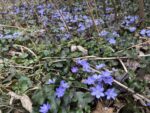
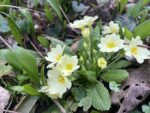
It is the third day after the spring equinox. When spring arrives, we tend to know with a certainty that perhaps only the onset of autumn compares. I woke to bird song. It was only 5 am yet a Blackbird's voice cut through the night. I have seen the Blackbird during the day, perched on the balcony railing next to the bedroom window. It sung for perhaps 10 or 15 minutes before other birds joined, and the dawn chorus kicked in. I lay in bed in the greying light and wondered: how does the first bird know when to sing? It felt as if the Blackbird had sung up the sun, not the other way around.
2025-03-23 18:36:00
Goownown Growers
The Seaweed Institute
CAST, Helston, Cornwall, United Kingdom
United Kingdom
NOAA-15

2025-03-23 10:08:54
Richard A Carter
University of York, Campus East, United Kingdom
United Kingdom
NOAA-19
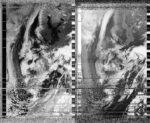
Equipment troubles finally subsided for today's pass, resulting in a pleasingly expansive view of Europe and parts of North Africa. One interesting aside is that the wind was such that it blew through small gaps in the antenna, making distinctly musical notes in the process - can imagine a speculative art project in which the antenna is turned into a sort of instrument, working alongside the distinct notes of the NOAA transmission coming in. It would be quite the composition!
2025-03-22 23:07:00
Heidi Neilson
Gilboa, New York, United States
United States
NOAA-18

2025-03-22 18:21:00
Vienna Automatic
Vienna, Austria
Austria
NOAA-15

2025-03-22 10:21:07
Sasha Engelmann
Hackney Downs, London, United Kingdom
United Kingdom
NOAA-19
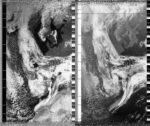
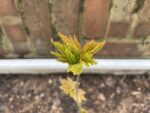
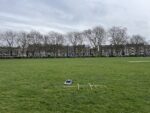
"That's so MacGyver!" says a blonde woman with a dog when I explain my tape-measure Yagi-Uda antenna. She and her friend / partner chat to me for a few minutes and walk off yelling back funding schemes that open-weather could apply to. "Welcome Trust.... Discovery Grant! Check it out!" I hear as they leave audible distance. I wonder if I've just met an arts and culture boss of some kind. I had come out to the park around 10:20am to catch a NOAA-19 pass that would pass over London at 90 degrees in maximum elevation- an elevation I have only rarely seen in my whole career capturing satellite images. A boy's football team is practising in my usual spot, so my reception is perhaps not as perfect as it normally is when I can see a perfect diagonal North-South across the Downs. Spring is everywhere today, in shooting daffodils and unfurling leaves. A twiggy plant that I had previously identified as a Serbian Lilac in my front garden reveals itselt to be a sycamore tree as its leaves unfold.
2025-03-22 10:23:00
Goownown Growers
The Seaweed Institute
CAST, Helston, Cornwall, United Kingdom
United Kingdom
NOAA-19

2025-03-21 23:20:00
Heidi Neilson
Gilboa, New York, United States
United States
NOAA-18

2025-03-21 20:25:00
Filip Shatlan and Diana Engelmann
Gainesville, Florida , United States
United States
NOAA-15
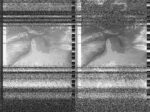
2025-03-21 22:16:00
Goownown Growers
The Seaweed Institute
CAST, Helston, Cornwall, United Kingdom
United Kingdom
NOAA-18

2025-03-21 21:36:00
Vienna Automatic
Vienna, Austria
Austria
NOAA-18

2025-03-21 12:25:10
Simeon Lok, Ella Richards, Rosie Everitt, Lena Prollochs, Millie Twist, Prinali Dilipo, Zhe Long Ou, Elinam Hammond, Maryam Ahmadi, and Sasha Engelmann,
Royal Holloway University , United Kingdom
United Kingdom
NOAA-18
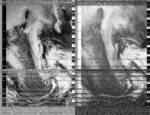
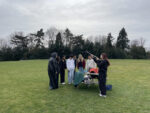
It was overcast and dry. Some sun was peaking through. It got a bit windy at times, but there was usually a nice gentle breeze. It was about sixteen degrees Celsius. The satellite pass was really interesting to see. The experience was quite grounding - being connected to an orbiting machine in the sky.
2025-03-21 12:25:30
Richard A Carter
University of York, Campus East, United Kingdom
United Kingdom
NOAA-18

Software problems caused frequent glitches in the audio stream, resulting in this rather "striated" sounding, despite an otherwise excellent signal. A reminder, if there ever was, of the fragile chain of material structures and processes that enable these activities - and of how this fragility emerges from their status as constantly performing 'agents' in the world, rather than the typical image of technology as always fully tamed, always fully obedient to human imperatives.
2025-03-20 22:30:00
The Seaweed Institute and Goonown Growers
CAST, Helston, Cornwall, United Kingdom
United Kingdom
NOAA-18

2025-03-20 22:45:00
Cosmos Astronomy Club
Pune, India
India
NOAA-18

2025-03-20 12:09:00
Filip Shatlan and Diana Engelmann
Gainesville, Florida , United States
United States
NOAA-18
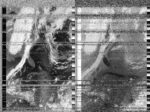
2025-03-20 12:06:00
Heidi Neilson
Gilboa, New York, United States
United States
NOAA-18

2025-03-20 10:43:00
The Seaweed Institute and Goonown Growers
CAST, Helston, Cornwall, UK
UK
NOAA-19
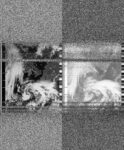
2025-03-20 10:08:00
Vienna Automatic
Vienna, Austria
Austria
NOAA-19

2025-03-19 23:41:00
Filip Shatlan and Diana Engelmann
Gainesville, Florida , United States
United States
NOAA-18
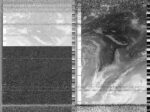
2025-03-19 19:41:00
Heidi Neilson
Gilboa, New York, United States
United States
NOAA-15

2025-03-19 18:35:00
The Seaweed Institute and Goonown Growers
CAST, Helston, Cornwall, UK
UK
NOAA-15
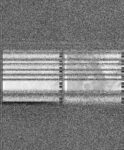
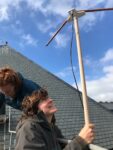
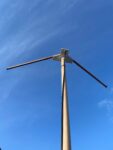
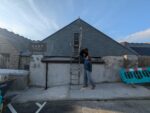
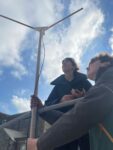
Blue skies for installing the ground station the day before this first image uploaded, we worked together with Ray from Goonown. It was warm and springlike in Helston, the magnolias on the streets around CAST had just come into their element.
We thought we knew the aspect of the building but we were surprised by the direction of true north, we had been looking closer to north north west. Spent some time pondering magnetic deviation, unsure if the smart phone compass already accounted for it, wished we had a proper compass with us.
We chatted with Ray about the dry weather and how different it’s for them planting this year compared to last.
A few passers-by already stopped and mused on the new feature - ‘are you installing Sky TV?’.
The computer, sitting under the desk of the buildings office, seemed to be working okay and we were intrigued to see if it would upload. Ruth listened to the audio file before we saw the first image, as the automatic upload didn’t work the first time - a strange sound.
Seeing this first image we couldn’t quite comprehend any features poking through the noise, it wasn’t until someone else pointed out Scotland and Ireland beneath the clouds, upside down. We worried the granite building was obscuring the reading too much but were excited to see if we could trouble shoot the image with help from Sasha and Soph.
The Seaweed Institute
2025-03-19 22:58:00
Cosmos Astronomy Club
Pune, India
India
NOAA-18

2025-03-18 22:07:00
Heidi Neilson
Gilboa, New York, United States
United States
NOAA-19

2025-03-18 23:55:00
Filip Shatlan and Diana Engelmann
Gainesville, Florida , United States
United States
NOAA-18
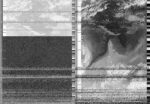
2025-03-18 18:26:00
Vienna Automatic
Vienna, Austria
Austria
NOAA-15

2025-03-17 20:29:00
Filip Shatlan and Diana Engelmann
Gainesville, Florida , United States
United States
NOAA-15
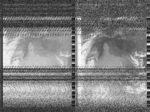
2025-03-17 10:54:00
Heidi Neilson
Gilboa, New York, United States
United States
NOAA-19

2025-03-17 07:28:00
Vienna Automatic
Vienna, Austria
Austria
NOAA-15

2025-03-16 11:09:00
Filip Shatlan and Diana Engelmann
Gainesville, Florida , United States
United States
NOAA-19
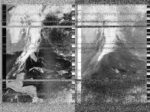
2025-03-16 15:06:00
Heidi Neilson
Gilboa, New York, United States
United States
NOAA-19
